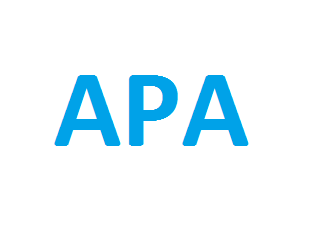
The Academic Perspective Procedia publishes Academic Platform symposiums papers as three volumes in a year. DOI number is given to all of our papers.
Publisher : Academic Perspective
Journal DOI : 10.33793/acperpro
Journal eISSN : 2667-5862
Failure Analysis Of Buried Gas Pipelines Crossing Seismic Faults
M. Rizwan Akram;Ali Yesilyurt;A.Can. Zulfikar;F. Göktepe
1188
509
Abstract
Research on buried gas pipelines (BGPs) has taken an important consideration due to their failures in recent earthquakes. In permanent ground deformation (PGD) hazards, seismic faults are considered as one of the major causes of BGPs failure due to accumulation of impermissible tensile strains. In current research, four steel pipes such as X-42, X-52, X-60, and X-70 grades crossing through strike-slip, normal and reverse seismic faults have been investigated. Firstly, failure of BGPs due to change in soil-pipe parameters have been analyzed. Later, effects of seismic fault parameters such as change in dip angle and angle between pipe and fault plane are evaluated. Additionally, effects due to changing pipe class levels are also examined. The results of current study reveal that BGPs can resist until earthquake moment magnitude of 7.0 but fails above this limit under the assumed geotechnical properties of current study. In addition, strike-slip fault can trigger early damage in BGPs than normal and reverse faults. In the last stage, an early warning system is proposed based on the current procedure.
Keywords:
Buried gas pipelines, seismic faults, normal fault, reverse fault, strike slip fault
References
[1] J. Kim, A. Deshmukh, M. Hastak, A framework for assessing the resilience of a disaster debris management system, Int. J. Disaster Risk Reduct. 28 (2018) 674–687.
[2] V. Cerchiello, P. Ceresa, R. Monteiro, N. Komendantova, Assessment of social vulnerability to seismic hazard in Nablus, Palestine, Int. J. Disaster Risk Reduct. 28 (2018) 491–506.
[3] O’Rourke, T. D., and M. C. Palmer. 1996. “Earthquake performance of gas transmission pipelines.” Earthquake Spectra 12 (3): 493–527.
[4] Pineda-Porras, O., and M. Najafi. 2010. “Seismic damage estimation for buried pipelines: Challenges after three decades of progress.” J. Pipeline Syst. Eng. Pract. 1 (1): 19–24. https://doi.org/10.1061/(ASCE)PS.1949-1204.0000042.
[5] Lanzano, G., F. S. de Magistris, G. Fabbrocino, and E. Salzano. 2015. “Seismic damage to pipelines in the framework of Na-Tech risk assessment.” J. Loss Prev. Process Ind. 33 (Jan): 159–172. https://doi.org/10 .1016/j.jlp.2014.12.006.
[6] Akram, M. Rizwan. Yeşilyurt A. and Zülfikar A. C “Seismic safety evaluation of buried gas pipelines subjected to longitudinal permanent ground deformation (PGD)”. 5th International Conference on Earthquake Engineering and Seismology, Ankara, Turkey: October 2019
[7] Psyrras, N., Kwon, O., Gerasimidis, S., Sextos, A., 2019. Can a buried gas pipeline experience local buckling during earthquake ground shaking? Soil Dyn. Earthq. Eng. 116, 511–529.
[8] Psyrras, N., Sextos, A., 2018. Safety of buried steel natural gas pipelines under earthquake-induced ground shaking. A review. Soil Dyn. Earthquake Eng. 106, 254–277.
[9] Spyros A. Karamanos., Gregory C. Sarvanis; Brent D. Keil., and Robert J. Card. “Analysis and design of buried steel water pipelines in seismic areas.” Journal of Pipeline Systems Engineering and Practice Vol. 8, Issue 4 (November 2017). https://doi.org/10.1061/(ASCE)PS.1949-1204.0000280
[10] Wells, D. L., and Coppersmith K. J. (1994), “New empirical relationships among magnitude, rupture length, rupture width, rupture area, and surface displacement.” Bulletin of the Seismological Society of America, Vol-84, No-4, pp. 974-1002, August 1994.
[11] Ramberg, W., and Osgood, W R. (1943), Description of stress-strain curves by three parameters, Technical Notes: National Advisory Committee for Aeronautics, Washington, July 1943.
[12] JSCE (2000b), Recommended Practices for Earthquake Resistant Design of Gas Pipelines, Earthquake Resistant Codes in Japan, Japan Society of Civil Engineering (JSCE), Japan Gas Association, January 2000.
Cite
-
 %0 Academic Perspective Procedia (ACPERPRO) Failure Analysis Of Buried Gas Pipelines Crossing Seismic Faults% A M. Rizwan Akram , Ali Yesilyurt , A.Can. Zulfikar , F. Göktepe% T Failure Analysis Of Buried Gas Pipelines Crossing Seismic Faults% D 11/1/2020% J Academic Perspective Procedia (ACPERPRO)% P 781-790% V 3% N 2% R doi: 10.33793/acperpro.03.02.2% U 10.33793/acperpro.03.02.2
%0 Academic Perspective Procedia (ACPERPRO) Failure Analysis Of Buried Gas Pipelines Crossing Seismic Faults% A M. Rizwan Akram , Ali Yesilyurt , A.Can. Zulfikar , F. Göktepe% T Failure Analysis Of Buried Gas Pipelines Crossing Seismic Faults% D 11/1/2020% J Academic Perspective Procedia (ACPERPRO)% P 781-790% V 3% N 2% R doi: 10.33793/acperpro.03.02.2% U 10.33793/acperpro.03.02.2
© Academic Perspective 2018. All rights reserved.




